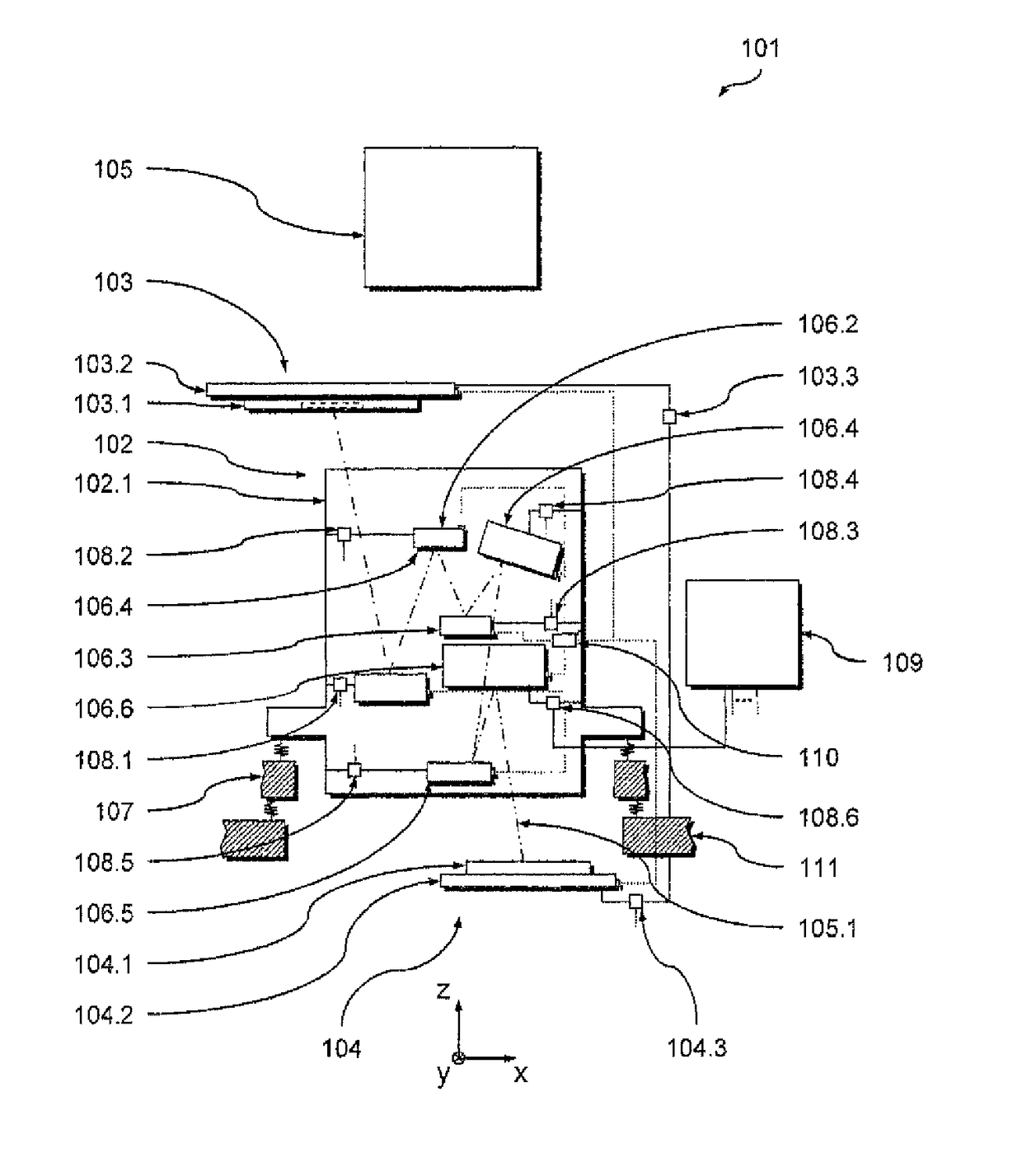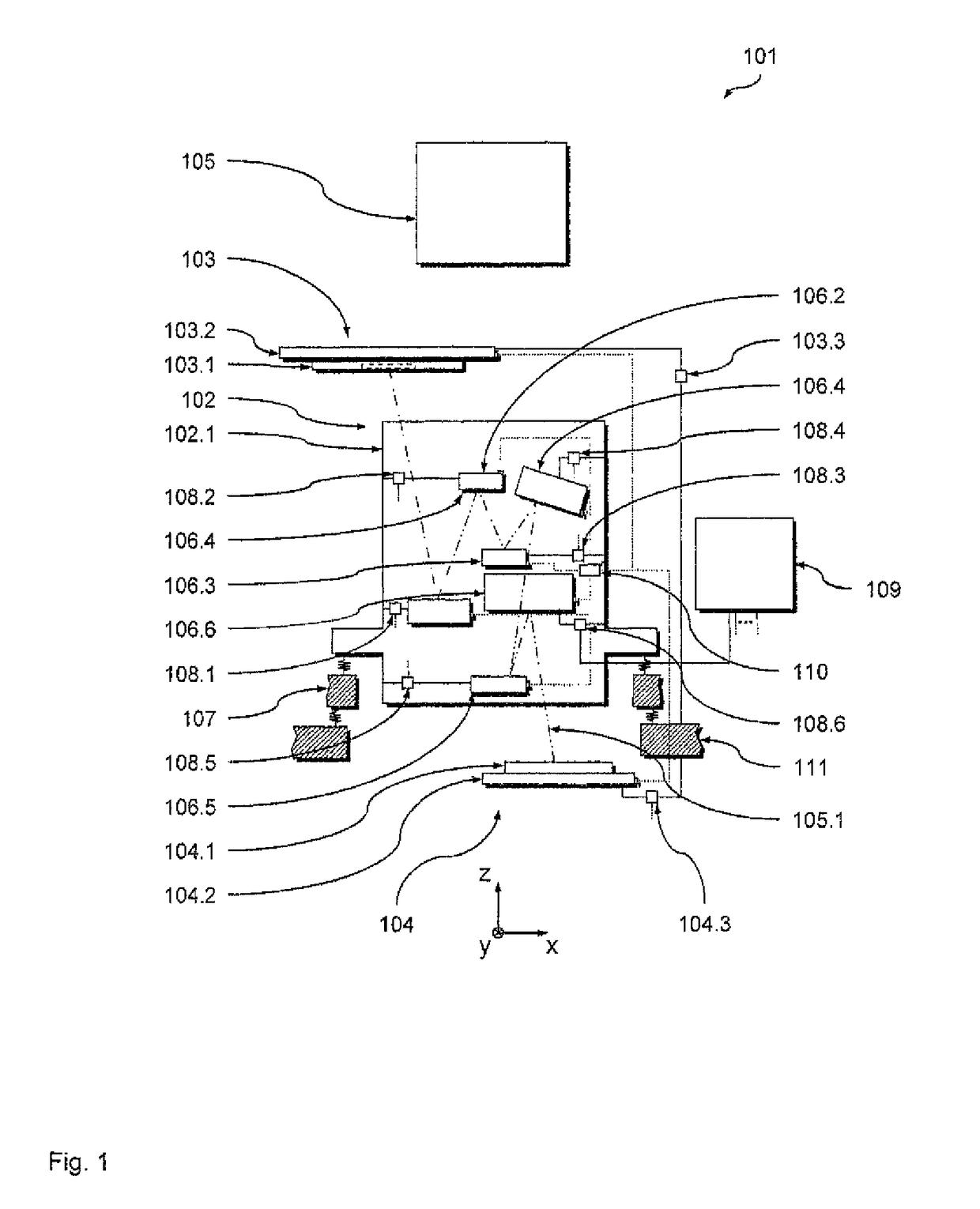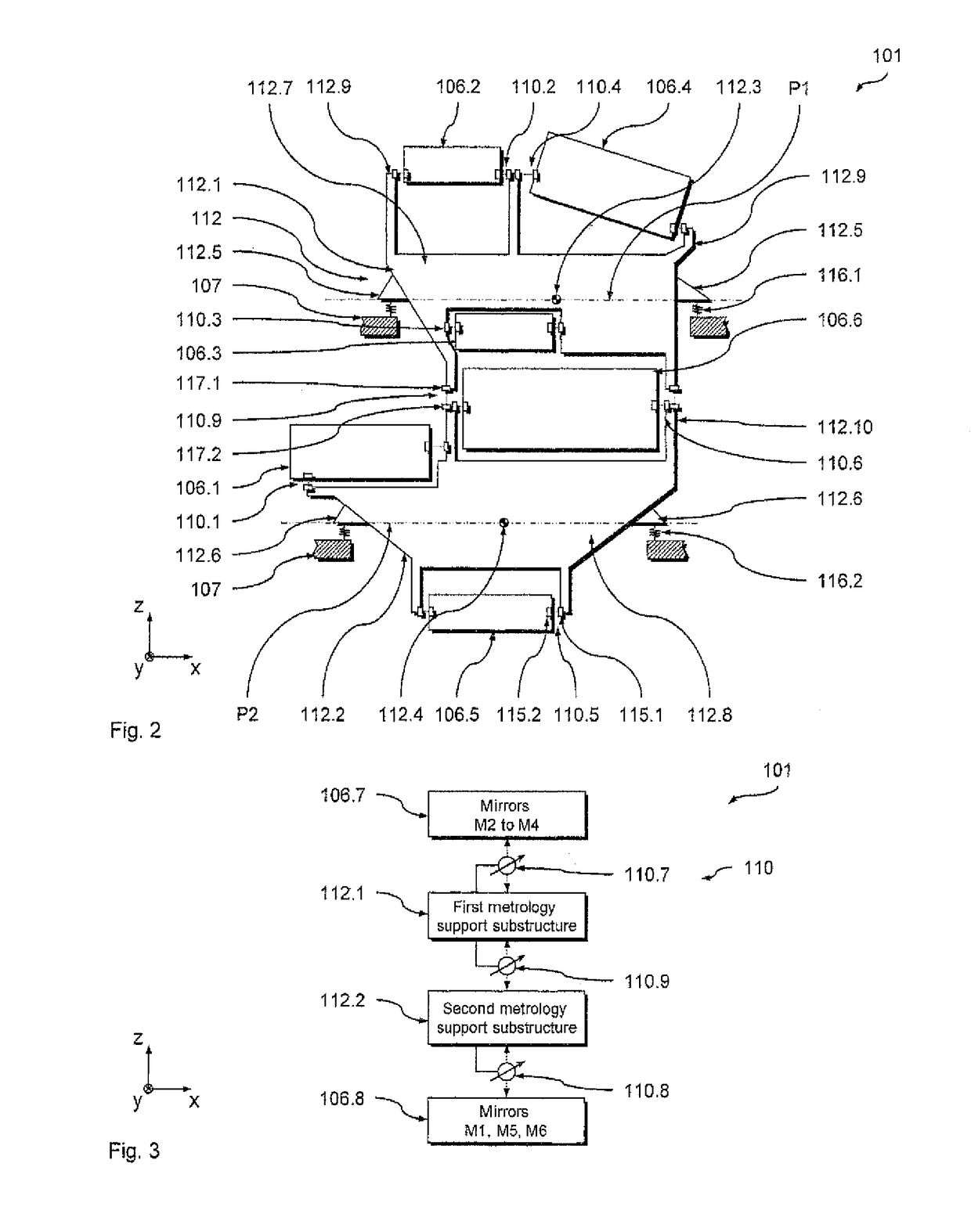Optical imaging arrangement with multiple metrology support units
a technology of optical imaging and support units, applied in the direction of optical apparatus testing, instruments, photomechanical equipment, etc., can solve the problems of not being able to use common refractive optics anymore, unable to achieve high-quality exposure, etc., to achieve good and long-term reliable imaging properties
- Summary
- Abstract
- Description
- Claims
- Application Information
AI Technical Summary
Benefits of technology
Problems solved by technology
Method used
Image
Examples
first embodiment
[0037]In the following, a preferred first embodiment of an optical imaging arrangement 101 according to the invention with which preferred embodiments of methods according to the invention may be executed will be described with reference to FIGS. 1 to 5. To facilitate understanding of the following explanations a xyz coordinate system is introduced in the Figures, wherein the z-direction designates the vertical direction (i.e. the direction of gravity).
[0038]FIG. 1 is a highly schematic and not-to-scale representation of the optical imaging arrangement in the form of an optical exposure apparatus 101 operating in the EUV range at a wavelength of 13 nm. The optical exposure apparatus 101 comprises an optical projection unit 102 adapted to transfer an image of a pattern formed on a mask 103.1 (located on a mask table 103.2 of a mask unit 103) onto a substrate 104.1 (located on a substrate table 104.2 of a substrate unit 104). To this end, the optical exposure apparatus 101 comprises a...
second embodiment
[0126]In the following, a second preferred embodiment of an imaging arrangement 201 according to the invention with which preferred embodiments of the methods according to the invention may be executed will be described with reference to FIGS. 6 and 7. The optical imaging arrangement 201 in its basic design and functionality largely corresponds to the optical imaging arrangement 101 such that it is here mainly referred to the differences. In particular, identical components have been given the identical reference, while like components are given the same reference numeral increased by the value 100. Unless explicitly deviating statements are given in the following, explicit reference is made to be explanations given above in the context of the first embodiment with respect to these components.
[0127]The only difference between the optical imaging arrangement 201 and the optical imaging arrangement 101 lies within the deviating concept of using the reference metrology device 210.9 of ...
third embodiment
[0141]In the following, a third preferred embodiment of an optical imaging arrangement 301 according to the invention with which preferred embodiments of the methods according to the invention may be executed will be described with reference to FIG. 8. The optical imaging arrangement 301 in its basic design and functionality largely corresponds to the optical imaging arrangement 201 such that it is here mainly referred to the differences. In particular, identical components have been given the identical reference, while like components are given the same reference numeral increased by the value 100. Unless explicitly deviating statements are given in the following, explicit reference is made to be explanations given above in the context of the second embodiment with respect to these components.
[0142]The main difference between the optical imaging arrangement 201 and the optical imaging arrangement 301 lies within the deviating split design of the projection system metrology support ...
PUM
| Property | Measurement | Unit |
|---|---|---|
| resonant frequency | aaaaa | aaaaa |
| resonant frequency | aaaaa | aaaaa |
| resonant frequency | aaaaa | aaaaa |
Abstract
Description
Claims
Application Information
 Login to View More
Login to View More - R&D
- Intellectual Property
- Life Sciences
- Materials
- Tech Scout
- Unparalleled Data Quality
- Higher Quality Content
- 60% Fewer Hallucinations
Browse by: Latest US Patents, China's latest patents, Technical Efficacy Thesaurus, Application Domain, Technology Topic, Popular Technical Reports.
© 2025 PatSnap. All rights reserved.Legal|Privacy policy|Modern Slavery Act Transparency Statement|Sitemap|About US| Contact US: help@patsnap.com



